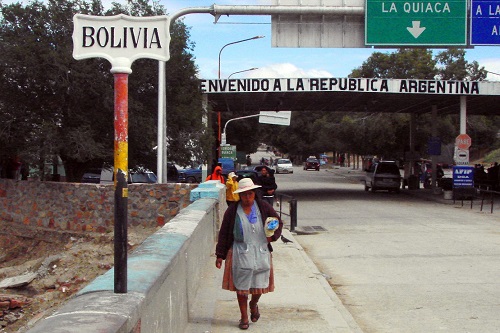CC photo
By
Ricardo Swire
Argentina’s political directorate recently increased military deployments to borders shared with Paraguay and Bolivia, the country’s land border that extends 5,800 miles and 3,200 miles of coastline qualifying it as an ideal smuggling hub. In January 2016 a presidential decree reinstated the “shoot down” policy that allows national security and law enforcement officials to aggressively target suspected narco-planes. Such aircraft frequented Argentina’s northern skies transporting no less than twenty tons of cocaine to the country.
During July 2018 Argentina’s president also authorized a “modernization” process for the armed forces, a national offensive conceptualized as counteraction against increased regional drugs and guns trafficking. A combination of 3,000 Federal Police, Coast Guard, Gendarmerie and Airport Police officials are deployed to Santa Fe province, 1,500 assigned to Rosario. Argentina’s Coast Guard utilizes real-time electronic maps that highlight the whereabouts of each ship that navigates Argentine territorial waters.
CARICOM intelligence reports chronicled scenarios where Argentine cities such as Rosario have been violently challenged by crime and violence, caused by battles between trafficking syndicates. Brazilian, Colombian, Mexican and Italian traffickers frequently use Rosario and Santa Fe provinces in Argentina to warehouse cocaine, methamphetamines and marijuana shipments dispatched from Brazil and Paraguay. Rosario’s placement, along the Parana River that passes through Buenos Aires and enters the Atlantic Ocean, highlights the Argentine district’s criticality as a transit point for Paraguayan marijuana.
In 2016 two shipments, collectively moving 32 metric tons of marijuana, were intercepted along the Paraguay/Parana waterway. Criminal gangs based in depressed areas on the outskirts of Rosario control across land deliveries to Argentina’s third largest city. Argentina’s hardened military resources in the north, plus use of soldiers for internal affairs, have tingling political sensitivities given the country’s history of military dictatorships. The country is considered the fifth largest trafficking point for cocaine journeying to Asia and Europe.
Shipping companies made additional financial investments towards security, the introduction of electronic padlocks monitored by Customs, close circuit television (CCTV) cameras and nonintrusive cargo scanners among efforts to restore security. Cocaine shipments continue to arrive via Argentina’s port system however. In one enforcement interdiction Customs Officers seized 30 kilos of cocaine valued US$600,000. The drug shipment, destined for Africa and Europe, was absorbed in rice grains stored in a Rosario commercial warehouse.
Ricardo Swire
Ricardo Swire is the Principal Consultant at R-L-H Security Consultants & Business Support Services and writes on a number of important issues.



No Comments Yet!
You can be first to comment this post!